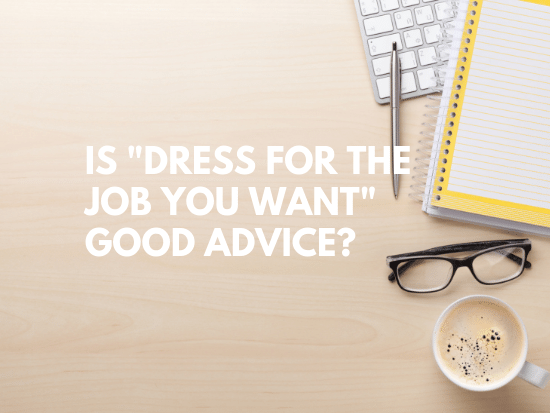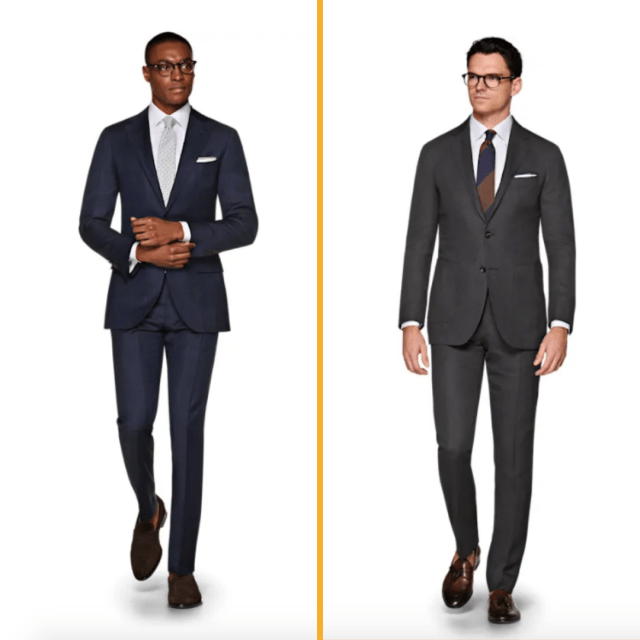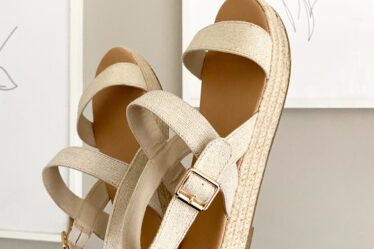
How many times have you heard, “Dress for the job you want, not the one you’ve got”?
The old adage about outfitting yourself in a wardrobe that facilitates upward mobility may pass for conventional wisdom these days, but as workplace dress codes get more complicated, is the advice still relevant?
After all, we live in a world where Casual Friday is quickly closing in on Casual Monday through Casual Thursday. Where a growing tribe of resourceful freelancers work from home in who knows what. A world here pajama jeans are a real thing.
But while our culture continues trending towards the informal, here at SG HQ we say there’s still a case to be made for committing to dress for the job you want.

I’m not saying show up to your graphic design gig on Monday in a three-piece suit. I just think that adopting a “Lemme look better than the next guy” attitude towards your wardrobe can only help you in your career.
Because while you could get dressed in the morning thinking, What’s the least I can get away with?, why would you?
After all, that’s not how you approach the rest of your workday, is it? If you’re invested in your career, you’re probably already doing the superficial things that telegraph the message, “I am good at my job.” Things like showing up ten minutes earlier than your co-workers in the morning. Or keeping talk of any inebriated weekend exploits to a minimum (at least around your superiors).
Dressing well is just one more simple action you can take that reinforces your professional competence. If you’re truly dedicated to excelling in your chosen career, cutting corners—whether in your actions, attitude or attire—won’t get you there.
Why bother? You may ask. Dressing up doesn’t make me any better at my job. True, but here’s the thing:
Dressing well is a chance to make a positive impression on those who have no idea how good you are at your job.
Let’s say your boss’s boss sees you once a week—on the elevator, maybe, or at the far end of a conference table during a staff meeting. You’ve never talked to him or her, and they’ve never really seen you in action. How you look, then, is one way you can make an impression without saying a word. Don’t you want that impression to be a good one?
Of course, workplace dress codes can vary wildly from one industry to the next, so going above and beyond the “norm” may or may not be all that difficult (and yes, every office has a dress code—whether expressly imposed or socially implied).
If jeans are a staple in your office, wearing a clean, well-cut pair, i.e. not the same ones you rake the yard in on Saturdays, may be enough to impress. If your office culture calls for an open-necked button-down, try upgrading with a tie from time to time. Polish your shoes. Tie your shoelaces. Match your socks to your shirt. Wear a belt. Wear a pocket square.
Any extra effort on top of what’s expected may go farther than you think.
4 workplace outfits to help you dress for the job you want:
Dress code: Casual*
*or non-existent

Office Style Tip: A crisp Oxford shirt is the perfect wardrobe item to set yourself apart from your t-shirt-wearing brethren. A bomber solidifies your “trying just a little bit harder than everyone else” (in the best possible way) style vibes.
Dress code: Business casual

Office style tip: Business casual can sometimes feel like the most confusing office dress code because it’s not quite casual, not quite formal. The perfect way to meet in the middle? A structured sport coat. Wear it with jeans. Wear it with chinos. Hell, wear it with dress pants! So long as they’re not the same color as the jacket (people might think you’re trying to make them think it’s a suit when, well, it’s obviously not).
Dress code: Business professional

Office Style Tip: A sweater in a color you like tones down the formality of a suit. As do “fun socks,” which are a real game-changer when it comes to adding personality to an outfit.
Dress Code: Business Formal

Office Style Tip: A suit in navy or charcoal is the way to go in a business formal environment. Sure, you can eventually break out and add some interesting patterns to the mix, but if you’re just starting out, it’s smart to cover the basics first.
***
SG Says: At the end of the day, everything you do at work affects others’ perceptions of you, including those in the job you want. So how badly do you want to do well? Sure, you could show up early, stay late, and work weekends….or you could start by wearing chinos when you’d rather be in cut-offs.
Your willingness to sacrifice—be it your free time or your casual attire—is telling. No, clothes don’t make the man, but they do help tell his story.
***
Want some help figuring out how to dress for the job you want? Team SG can help you sort out your office style! We’ll put together a personalized shopping plan just for you. Learn more here.




